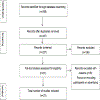Digital health for sexually transmitted infection and HIV services: a global scoping review
- PMID: 31789695
- PMCID: PMC7152691
- DOI: 10.1097/QCO.0000000000000619
Digital health for sexually transmitted infection and HIV services: a global scoping review
Abstract
Purpose of review: The current study aimed to review how digital health has been used for sexually transmitted infection (STI)/HIV prevention, testing, and treatment.
Recent findings: A scoping review was conducted by searching five databases for peer-reviewed literature published between March 2018 to August 2019. 23 out of 258 studies met the inclusion criteria and were assessed. Six studies used digital platform to enhance STI/HIV prevention messaging; four studies found that digital health can provide vivid promotional information and has been instrumental in increasing the accessibility and acceptability of STI/HIV testing; three studies reported digital health provides a channel to understand and interpret the discourses on preexposure prophylaxis (PrEP) and increase PrEP uptake; three studies focused on refining big data algorithms for surveillance; four studies reported on how digital interventions could be used to optimize clinical interventions; and four studies found digital interventions can be used to assist mental health services.
Summary: Digital health is a powerful and versatile tool that can be utilized in the production of high-quality, innovative strategies on STIs and HIV services. Future studies should consider focusing on strategies and implementations that leverage digital platforms for network-based interventions, in addition to recognizing the norms of individual digital intervention platforms.
Conflict of interest statement
Figures
References
-
- WHO. Sexually transmitted infections (STIs) 2019. https://www.who.int/news-room/fact-sheets/detail/sexually-transmitted-in... (accessed September 28, 2019).
-
- Obar JA, Wildman SS. Social Media Definition and the Governance Challenge: An Introduction to the Special Issue. SSRN Electron J 2015. doi:10.2139/ssrn.2647377. - DOI
Publication types
MeSH terms
Grants and funding
LinkOut - more resources
Full Text Sources
Medical
Research Materials
Miscellaneous



